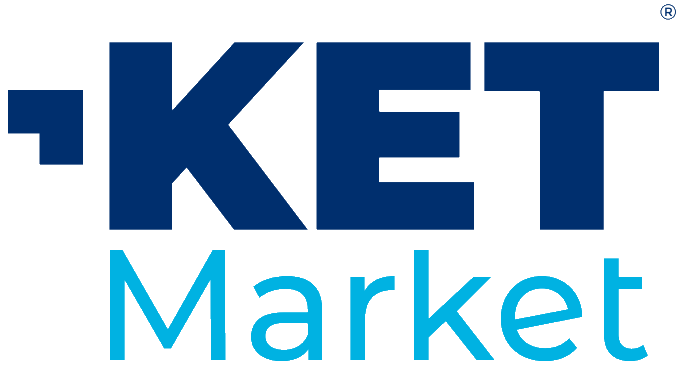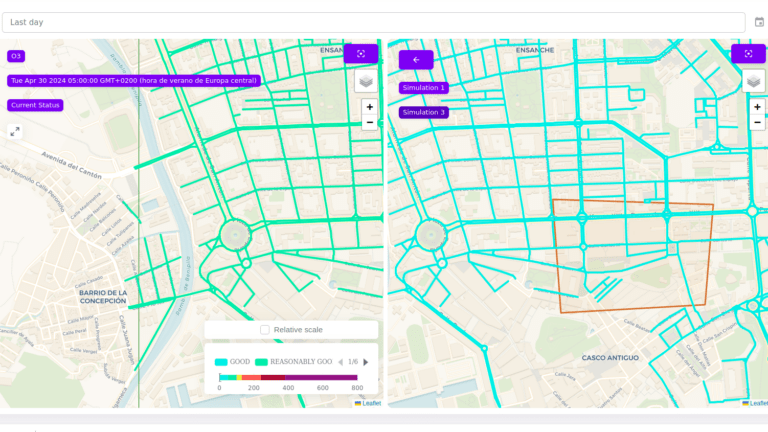Result description
The ImagiNext SaaS solution not only monitors transport-related pollution indicators identified through AI, but also tracks traffic conditions. The ImagiNext solution is able to predict the sources of pollution, providing information on the percentage of pollution that comes from traffic and compare the reduction in this percentage after the application of the low emission zone. By harnessing historical data, the solution’s AI processes forecast various pollution scenarios, forming a powerful, innovative tool based on open standards.
The sensors provide the user with clear indicators on the parameters collected and feed the backend models. These indicators are represented through analysis and visualisation tools (dashboards) that assist city managers in making informed and evidence-based decisions, allowing them to efficiently design and carry out the necessary actions, ensuring the improvement of the quality of life in cities, the mitigation of climate change and the creation of air quality indicators that monitor the evolution of the environment in which the actions are carried out, managing to create smarter and more sustainable environments.
Addressing target audiences and expressing needs
- Expanding to more markets /finding new customers
Libelium is actively seeking new markets and clients to scale and expand the impact of the IMAGINEXT solution. We are specifically looking for new cities interested in deploying the service to test and optimise their sustainable mobility strategies.
- Other Actors who can help us fulfil our market potential
R&D, Technology and Innovation aspects
Currently, the IMAGINEXT SaaS solution is deployed on the market and has been implemented in two cities, Cartagena and Lindau. We are now actively seeking new cities interested in deploying the service to test and optimise sustainable mobility strategies, while fostering collaborations with policymakers and stakeholders to enhance its reach and impact across Europe.
The ImagiNext solution business model is based in a SaaS software with license to cities along with a recurrent revenue maintenance program. The contracts will be pursued through a direct selling approach to the existing clientele of partners as well as to any other new lead. The sales channels are focused on the development of different cooperations and partners via distributors of cloud services as AWS, Microsoft Azure, RedHat and other marketplaces of cloud services. At the same time, FIWARE Marketplace as this service is enabled with FIWARE standards (https://www.fiware.org/marketplace/), finally we have resellers as distributors were Libelium has a large network of resellers (https://www.libelium.com/es/ecosistema/). The mail selling channels are two: i) directly to cities by public tenders or ii) B2B channel integrating our solutions in platfors from other companies that go to public tenders.
The ImagiNext solution garantees the replication across Europe as it takes data from different european open datasets, as the European Air Quality Network (https://aqportal.discomap.eea.europa.eu/) and the Copernicus Atmospheric Monitoring Service (https://ads.atmosphere.copernicus.eu/datasets/cams-europe-air-quality-forecasts?tab=overview). In adittion, the AI algorithms are based on open source pollution dispersion models as CHIMERE or MUNICH as well comercial validated mobility softwares as PTV or SUMO. In this sense, the inclusion of hyperlocal IoT devices is not a limitation in terms of scalability, but it helps to improve the resolutions and accuracy of the models. Last, it is possible to replicate the solution out of Europe as our SaaS is compatible with other data sources as WRF, NOAA or EPA. As a proof of that, Libelium SaaS platform is deployed in more than 10 cities across europe.
Policymakers, when creating policies, are confronted with the lack of reliable and updated sources since all decisions are taken based on outdated and static data (such as GIS). This also affects city managers, urban planners and technicians, who need to decide on crucial matters and are conditioned by the lack of real-time and accurate data to make the right decisions to avoid penalties, accelerate investment for climate change mitigation and not lose grants. In consequence, the main problem addressed by this project derives from the consequences of climate change and the need to tackle it with strategies like the European Green Deal and the Recovery Plan. It is clear that the legislation is changing – for instance, the new air quality directive published in 2024 – and cities will need mechanisms to adapt their solutions to challenges of the next years.
Result submitted to Horizon Results Platform by LIBELIUM COMUNICACIONES DISTRIBUIDAS SL


 Please
Please  Get instant access to tailored funding opportunities that perfectly match your needs. This powerful feature is exclusively available to our premium members—helping you save time, stay ahead of the competition, and secure the right funding faster.
Get instant access to tailored funding opportunities that perfectly match your needs. This powerful feature is exclusively available to our premium members—helping you save time, stay ahead of the competition, and secure the right funding faster. Curious about who’s viewing your listings? Unlock insights into your last 20 visitors and discover potential leads instantly!
Curious about who’s viewing your listings? Unlock insights into your last 20 visitors and discover potential leads instantly!